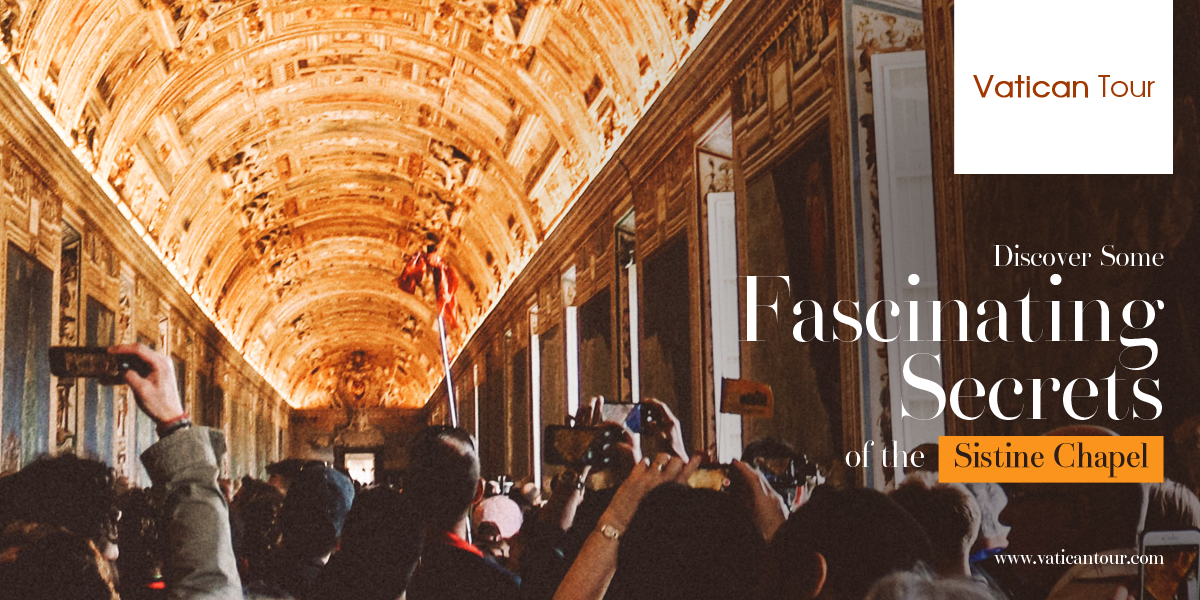For centuries, people of different faiths have flocked to the Sistine Chapel to behold Michelangelo’s masterwork and bask in its spiritual magnificence. The frescoes adorning the ceiling are definitely one of the most stunning and beautiful creations by mankind, a precious treasure of art that will continue to captivate millions for generations to come.
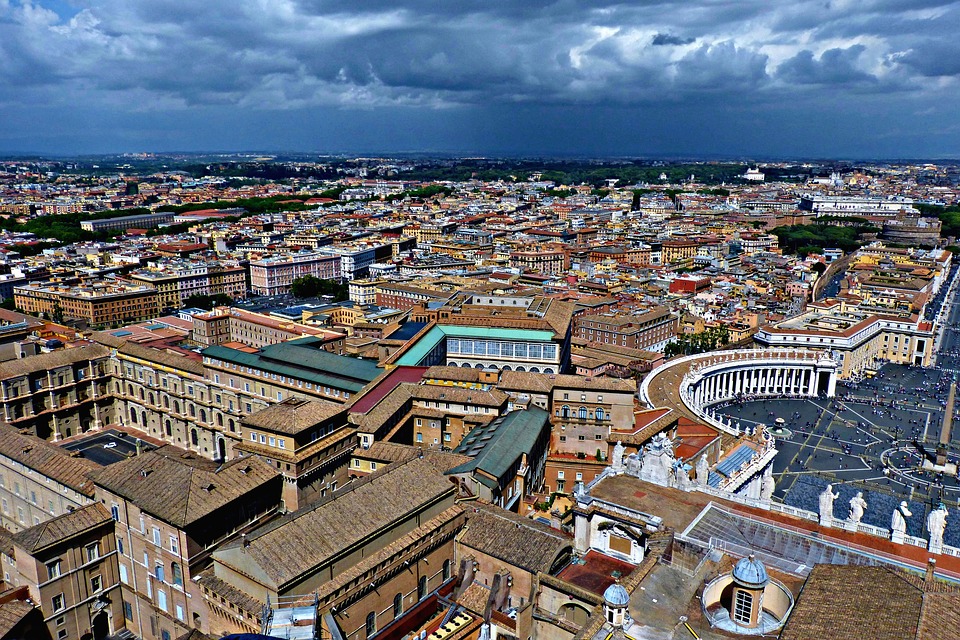
In this article, we have covered some astonishing and lesser-known details about the Sistine Chapel ceiling that can enrich your Vatican and Sistine Chapel tour, and equip you to fully understand and appreciate Michelangelo’s brilliant artwork.
Sculpting techniques in painting:
Towards the end of the 20th century, an elaborate restoration project was carried out to repair and clean the Sistine ceiling, which lasted nine years. Considering how much time it took to restore the ceiling, it is quite amazing that Michelangelo took only four years to paint the entire ceiling and in such a stunning manner!
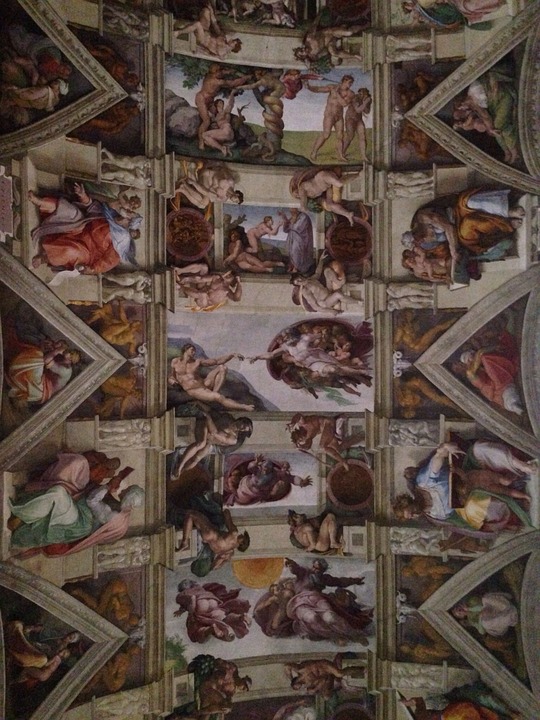
Appointed by Pope Julius II in 1508, Michelangelo started replacing the previous decoration of the ceiling, which featured a blue sky dotted with golden stars painted by an Umbrian artist. Not only did Michelangelo produce a masterpiece in a limited time, he also overcame two major challenges. First of all, at the time he was commissioned to work on the ceiling he had more experience in sculpting rather than painting. Secondly, the ceiling isn’t structured like a flat canvas appropriate for painting; on the contrary it has many complex curves owing to the building components of the roof.
Despite these additional challenges, Michelangelo painted figures that appear lifelike when scanned from below. Many a times, awestruck viewers question Vatican curators how the artist gave a three dimensional appearance to his paintings!
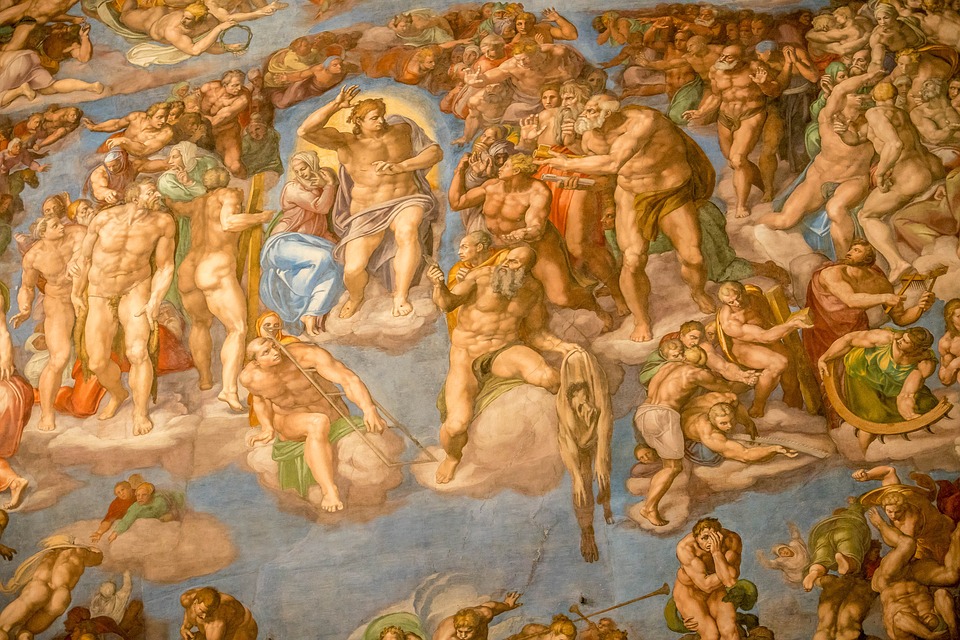
Some historians have suggested that Michelangelo’s prowess as a sculptor is the secret behind the depth and realistic effect of his frescoes. To sculpt human figures, he first needed to visualize them in three dimensions. Clearly, he used this visualization technique to paint gigantic figures on the ceiling. Moreover, the ceiling was painted by applying colour pigments on fresh plaster, explaining why the paints are so vibrant even today.
Shift in Style:
In 1510, Michelangelo took a break from his work for one year. Frescoes created following this break are noticeably different from previous paintings and make up the most admired parts of his work. These include narratives from the Bible, such as the famed ‘The Creation of Adam’– the paintings illustrate only important figures and are impressively large. This pared-down style of painting has actually helped convey emotions associated with the narratives to viewers standing on the floor.
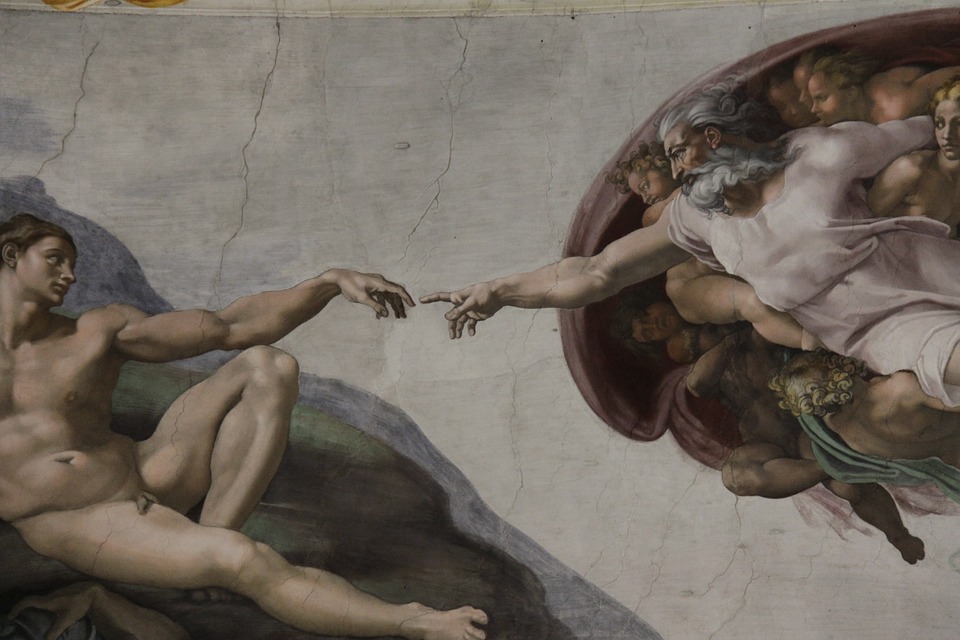
Only after completing all other paintings did Michelangelo start working on the figures of God. This is probably because he wanted as much experience and refining as possible to depict God perfectly.
Was it backbreaking?
It’s a popular myth in history that Michelangelo toiled away at the frescoes for years lying down on his back. Luckily for Michelangelo, this is probably incorrect. He worked from a standing position on a scaffold he built for himself. But this scaffolding remained in position till the very end of his work; so Michelangelo could see his entire work together only after the ceiling was unveiled for public viewing.
However, the strenuous work took a toll on his health and in 1509 he complained about his physical strains to a friend in a poem, which goes like this, ‘’I’ve already grown a goiter from this torture…’’!
Figurative frescoes:
In addition to being a genius sculptor and artist, Michelangelo was also an expert anatomist. Often, he dug up bodies from a church graveyard to study anatomy! Hence, it’s reasonable that prominent frescoes in the chapel have been found to draw parallels with anatomical features. For example, neuroanatomy specialists believe that ‘The Creation of Adam’ represents a side view of the human brain. Also, shapes used to create the figure of God have been found to accurately depict the human brain, including different parts like the artery, front lobe and stem.
Naturally, there has been a good amount of analysis following these discoveries. Maybe Michelangelo used anatomical illustrations to suggest that God not only gave Adam life, but also provided him supreme intelligence. Adorning a place of religious significance with scientific findings is possibly a way to convey his personal views on the conflict between science and religion, which was rife during his time.
Vatican Tours

Vatican Tours offers detailed and guided tours of the Vatican, complete with skip the line privileges and professional English speaking tour guides, enabling you to explore all the wonders inside the Vatican City and Sistine Chapel in depth. We also provide private tours of Rome for families; these tailored tours allow you to include preferred sites as well as design your own itinerary.

